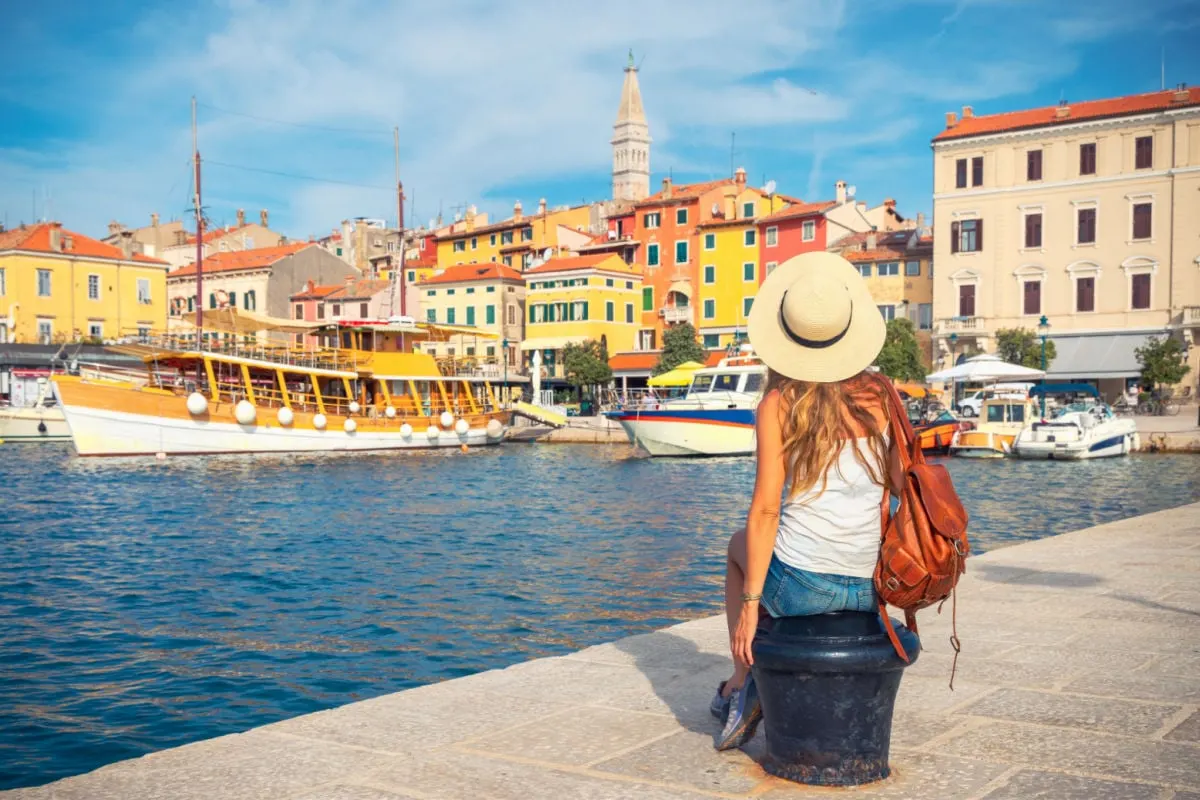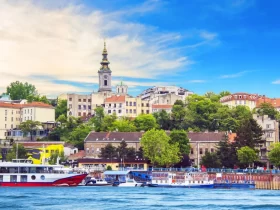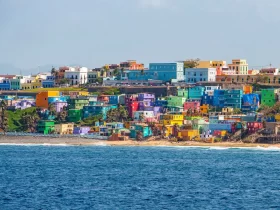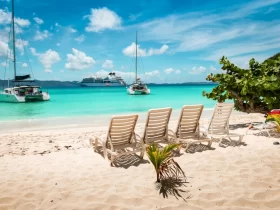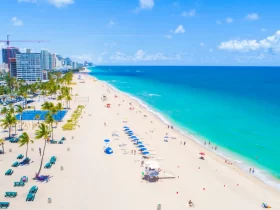Should you’ve been dreaming of picturesque cities that look as if they have been plucked out of a fairytale ebook, Roman ruins with origins misplaced to the passing of time, and alfresco dinners and wine because the solar units over azure waters, Italy is prone to be in your bucket checklist this yr.

As nice because it sounds, these idyllic summers don’t come with out concessions, be it the depletion of your financial savings and even surrendering your rights as a customer.
Strive discovering a room in floating Venice for underneath $300 an evening in August, or taking a selfie at this well-known picture spot in Portofino.
Simply to offer you a heads up concerning the latter, possibly do not for those who do not need to get fined.
Italy has had it with mass tourism, and it is taking a number of controversial steps to clamp down on the phenomenon, it is no surprise People now not really feel as welcome there as they could have as soon as been––fortunately, Il Belpaese will not be the one reply to your dolce vita prayers:
How Does Istria Really feel So Italian?
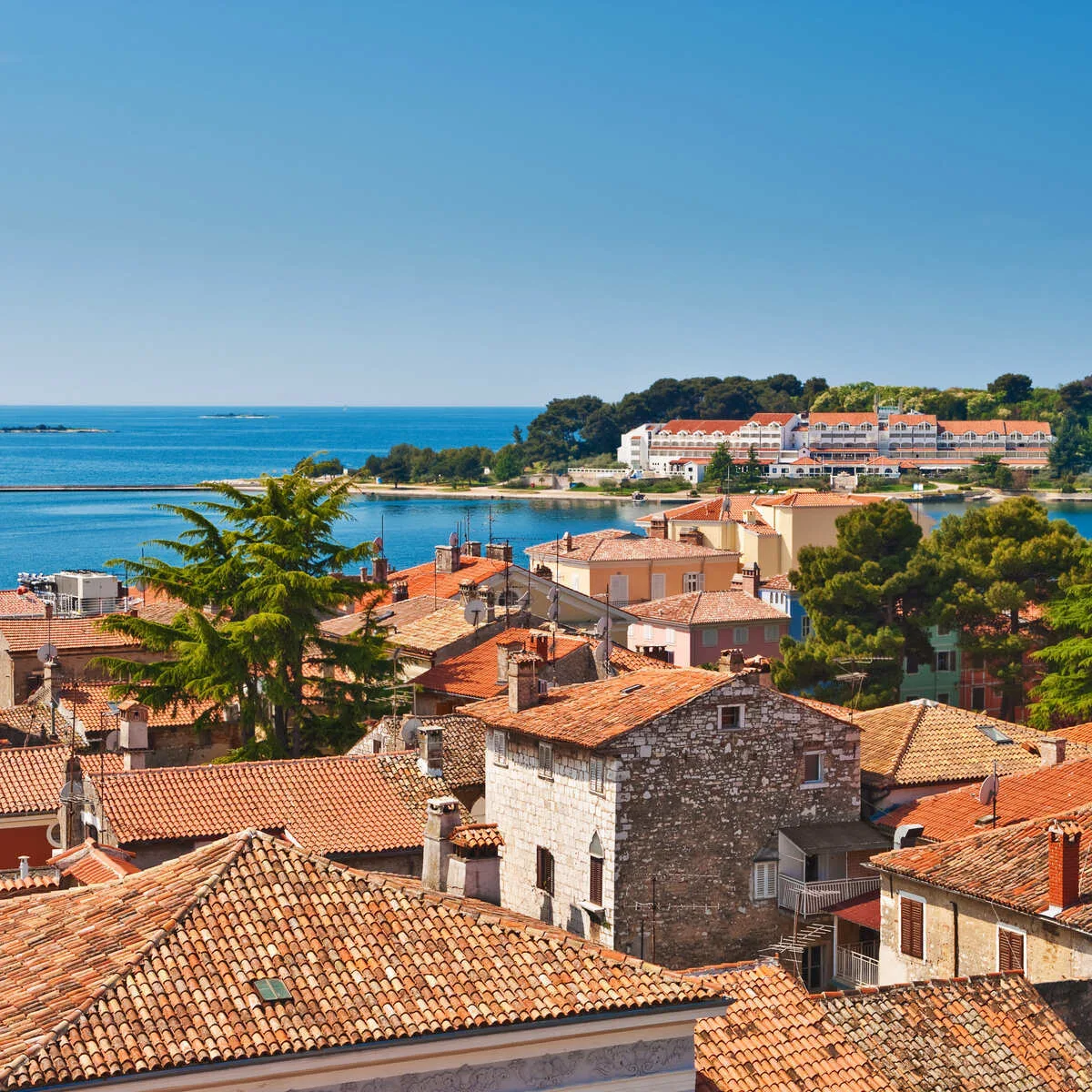
A brief drive from the border, jutting out into the teal-colored Adriatic Sea, Istria is a Croatian peninsula with a distinctly Italian character, providing coastal drives simply as scenic as Amalfi’s and historic websites as mesmerizing as Rome’s, all at cheaper costs.
While you image Istria, with its typical Italian structure, Mediterranean delicacies, and even the Southern European complexion of locals, you could be mistakenly led to imagine it’s some other Italian area, and also you would not be too far off:

You see, previous to World Warfare II, Istria was actually largely Italian, and it had been so for a number of centuries, first as a part of the now-extinct Republic of Venice, and later as a integral a part of the Italian Kingdom and its subsequent Republic.
It was solely ceded to Croatia after the neighboring nation misplaced the battle, however that doesn’t imply Istria itself misplaced its ‘Italianness’:
Picturesque Outdated Cities And Teal-Coloured Seas
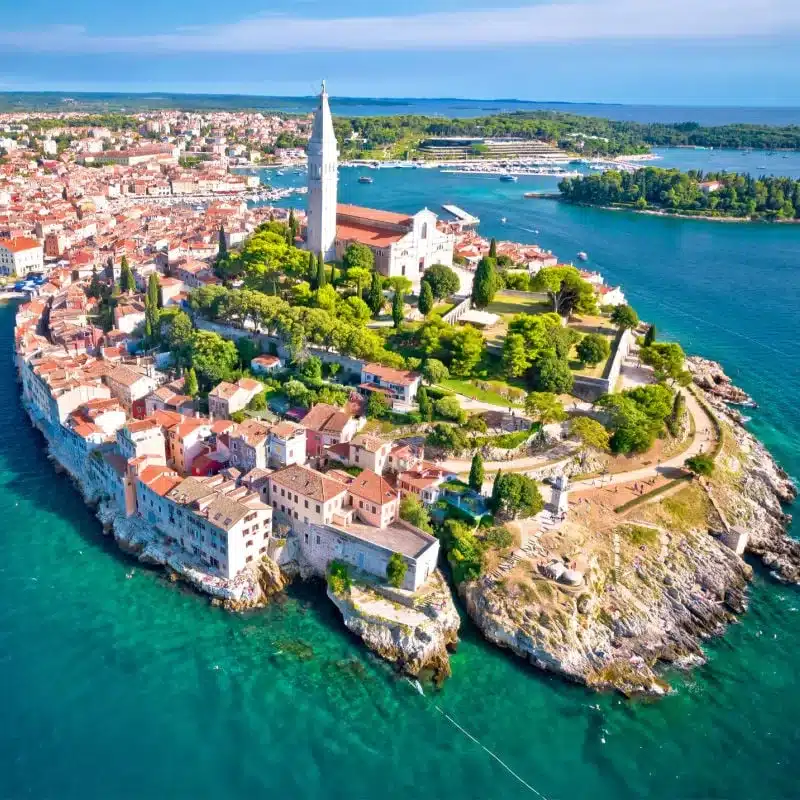
A historic fishing port positioned on the tip of a headland, hugged by waters of the clearest blue, Rovinj as soon as served as an extension of Venice, minus the canals: the car-free tangle of cobbled traces is lined by skinny pastel buildings and, very similar to La Serenissima, speared by a medieval campanile.
That is a working theme throughout Istria: a brief 46-minute drive north, Poreč takes a web page out of the identical town-building ebook, sitting on a slender peninsula, and boasting an unusually-high focus of Byzantine landmarks for a small settlement of 16,696.
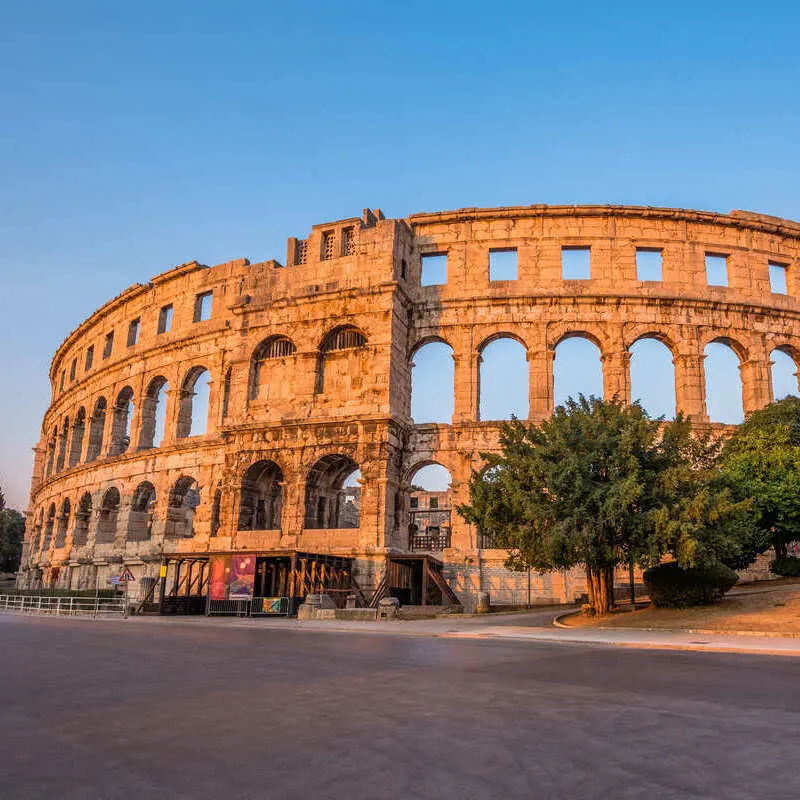
Let’s not overlook Pula, or ‘Rome by the Sea‘: a seaside resort with an enchanting historical past spanning 1000’s of years, it’s dominated by a perfectly-preserved Roman enviornment, which in contrast to the Colosseum, nonetheless has all its curvature intact.
Although it is the beach-lined coast that usually will get all probably the most buzz, charming Motovun shouldn’t be bypassed, both: sitting on a outstanding hill in central Istria, it’s a postcard-perfect fortified village surrounded by lush-green surroundings.
Underrated Coastal Paradise
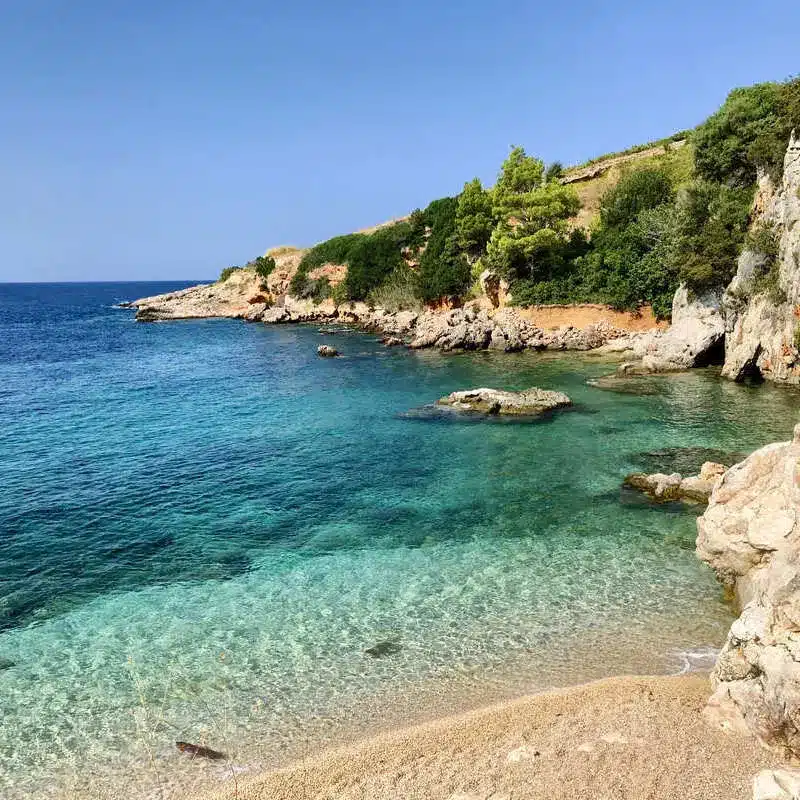
Italy is as sought-after for its nature as it’s for its cultural heritage, and as a former a part of Italy, Istria isn’t any exception:
The Dalmatian Coast could also be way more common amongst international guests, because it hosts the busy tourism hotspots of Cut up and Dubrovnik, in addition to an intensive checklist of Blue Flag seashores, however the Istrian shoreline is to not be underestimated.
Simply outdoors Roviny, Mulini Seashore is a Croat summer season paradise, with tiny, walkable pebbles and translucent waters––there’s additionally a seashore bar on website, and renting an umbrella and two beds for the day will price you solely $65, or the equal in euro.
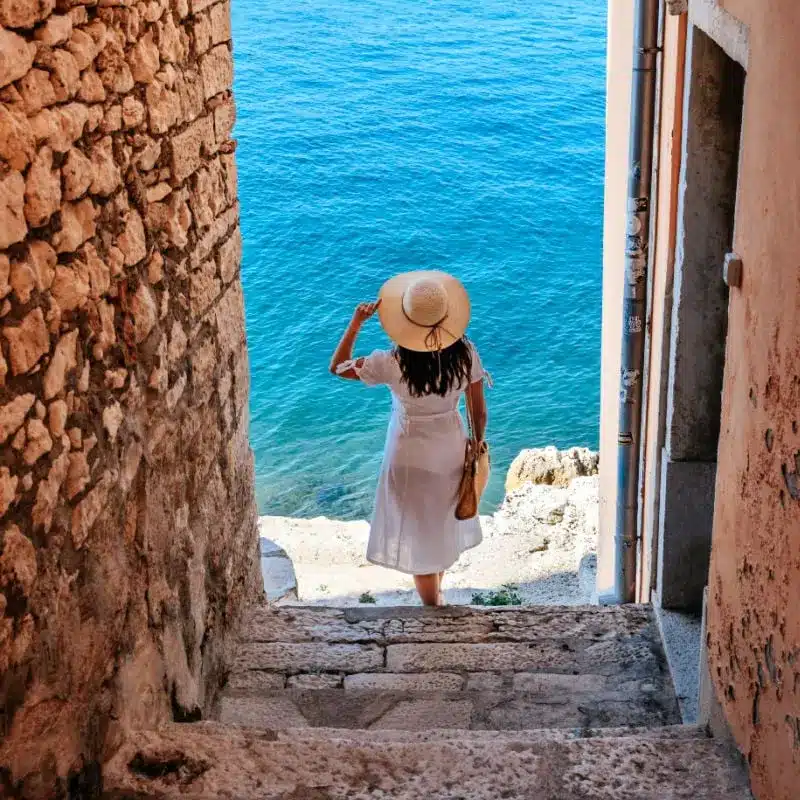
The family-friendly Fazana Seashore, about 31 miles from Poreč, is a peaceable oasis straddling calm, shallow waters, whereas the sand-and-pebble Valalta and its marine reserve with winding footpaths resulting in secretive coves is reserved for adventurous nudists.
A nationwide park comprising excessive sea cliffs and moon-like stone surfaces good for catching a tan, Kamenjak is yet one more pure surprise claimed by Istria, and it may be visited on a ship tour, dinner included for as low cost as $44 (it’s possible you’ll even spot a leaping dolphin!).
Istria Is Cheaper Than Italy
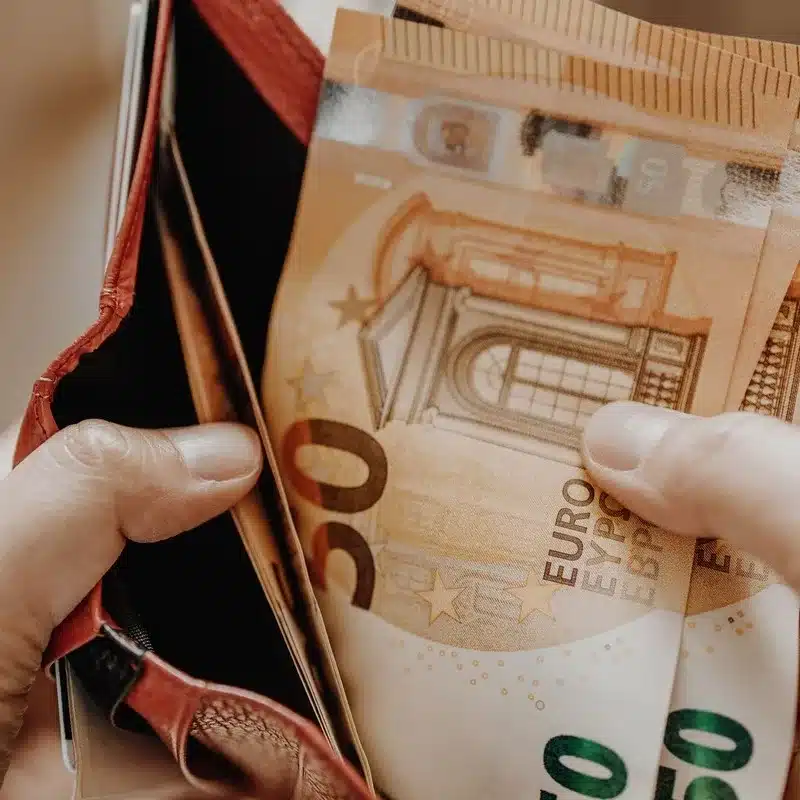
Talking of costs, Istria is certainly on the cheaper finish in comparison with overpriced Italy.
Whereas it’s definitely not as low cost as up-and-coming Montenegro or Greece-on-a-budget Albania, spending per week enjoyable at a beachside lodge and exploring its cultural highlights will most definitely not break the financial institution.
Primarily based on estimates offered by the search engine Journey My Dream, a continental lunch in a neighborhood restaurant in Pula prices $16.35, whereas a seafood dinner with a vegetable salad is round $21.79.
Getting some take-out calzoni from bakeries in Rovinj, you are unlikely to spend greater than 5 bucks, and for those who’re doing groceries to chop down on journey prices, it is much more reasonably priced: a kilo of seasonal fruit, freshly-picked, not one of the chemical compounds you get in America, prices about $2.18.

Moreover, the typical price of museum tickets in Istrian cities is a negligible $3.27, except main factors of curiosity like Pula Area, the place it is nonetheless an appropriate $10.90 to go to, and day excursions are often priced at $65.38.
As for lodging, the typical value of a 3-night keep in Istria is $227, in line with Finances Your Journey, with privately-managed Residences Anja in Rovinj listed for $98 and double rooms at Pula’s mid-range Lodge Veli Jože working you up solely $69 an evening.
There’s positively a spread right here, however until you are actively seeking to splurge, budgeting $871 – $900 for a one-week journey to Istria is real looking sufficient.

